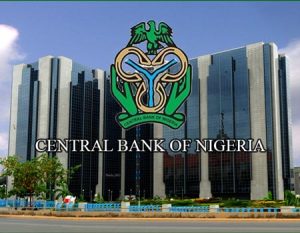Onome Amuge
Nigeria’s latest inflation figures arrive on the cusp of the Central Bank of Nigeria’s (CBN) 300th Monetary Policy Committee (MPC) meeting, scheduled for May 19-20, placing the apex bank’s hawkish stance under renewed scrutiny.
While a marginal dip in inflation might offer a semblance of relief, it is widely anticipated to be insufficient to trigger a reversal of the Monetary Policy Rate (MPR), which currently stands at a multi-decade high of 27.5 per cent.
Economists contend that the CBN’s aggressive tightening cycle has had limited success in curbing Nigeria’s persistent cost-push inflation. They argue that the primary drivers of price increases which include elevated fuel costs, pervasive insecurity disrupting supply chains, and a heavy reliance on imports, are deeply rooted structural issues that lie beyond the remit of monetary policy levers.
In recent months, the CBN has faced increasing calls from business leaders and trade unions to reassess its monetary policy. Concerns are mounting over the tightening credit environment and the escalating input costs that are squeezing local businesses and hindering economic activity.
The latest inflation data, coupled with these persistent concerns, has marginally increased speculation that the CBN might consider a pause or even a slight easing of interest rates at its upcoming MPC meeting.
Nigeria inflation eases to 23.71%, but high living costs persist
Nigeria’s seemingly relentless battle with inflation seemed to offer a flicker of respite in April 2025, as the headline inflation rate dipped to 23.71 per cent, a retreat from the 24.23 per cent recorded in March. Data released by the National Bureau of Statistics (NBS) provided a sliver of optimism, particularly on the food front, where the inflation index dipped to 21.26 per cent from 21.79 per cent.
The NBS attributed the deceleration in food price increases to a softening in the average costs of several staple commodities, including maize flour, wheat grain, dried okro, yam flour, soya beans, rice, bambara beans, and brown beans.
Meanwhile, the overall Consumer Price Index (CPI) climbed to 119.52 in April, reflecting a 2.18-point increase from the preceding month, indicating that while the relentless upward trajectory of prices had tempered the cost of goods and services continued its ascent.
On a year-on-year basis, the headline inflation rate stood at 9.99 percentage points lower than the 33.69 per cent recorded in April 2024. Similarly, the year-on-year food inflation rate registered a 19.27 percentage point reduction, falling to 21.26 per cent from the 40.53 per cent of the previous year.
However, analysts caution that these year-on-year comparisons are complicated by a recent change in the NBS base year for CPI calculation, shifting from November 2009 to a more recent period. This methodological adjustment, they stated, necessitates careful interpretation and raises questions about the true extent of the deceleration.
The World Bank, in its May 2025 Nigeria Development Update, echoed this sentiment, noting that the rebasing has introduced complexities in evaluating underlying inflation trends and warning that price pressures remain stubbornly elevated.
“Re-anchoring inflation expectations will require sustained monetary policy efforts,” the World Bank warned.
Inflation cools but high costs of living persists
While the month-on-month food inflation saw a 0.12 percentage points drop to 2.06 per cent in April, down from 2.18 per cent in March, the reality on the ground for millions of Nigerians presents a worrisome outlook.
According to market reports, despite the statistical easing, the crushing burden of high prices, particularly for essential food items, continues to inflict hardship across the nation.
For a vast majority of Nigerian households, the aspiration of affording a decent, balanced meal remains an increasingly distant dream, a privilege largely confined to the wealthiest strata of society. This reality is seen to persist despite a barrage of fiscal and monetary policy interventions ostensibly aimed at cooling the overheated price environment.
According to analysts, the fundamental structural impediments that fuel inflation including insecurity in key agricultural regions disrupting production and supply chains, limited access to affordable loans for farmers and small businesses, a dilapidated road network hindering efficient transportation of goods, and other deep-seated economic vulnerabilities, continue to tighten the noose on the livelihood of the average Nigerian.
Market checks across the country reveal a disconnect between the official inflation figures and the prices consumers face daily. While the CPI report suggests a slowdown in food inflation, traders and consumers alike report that the cost of staples remains prohibitively high.
A recent consumer report by SEID, a non-governmental voluntary development organisation, indicated the severity of the crisis, revealing that nearly half of Nigerian households are forced to allocate their entire income to food purchases, leaving no room for expenditure on crucial areas such as education, healthcare, and other essential consumption items.
The manufacturing sector, considered an engine for economic growth and job creation, is also bearing the brunt of the inflationary squeeze. This is as rising production costs, driven by the high cost of imported raw materials and persistent increases in energy prices, are eroding profitability and leading to collapsing consumer demand as purchasing power dwindles.
Data from the Manufacturers Association of Nigeria (MAN)’s Second Half Economic Review 2024 laid bare the extent of this crisis, revealing a 87.5 per cent increase in the value of unsold finished goods hittingN2.14 trillion.
Notably, energy costs have emerged as a particularly acute pain point for manufacturers. MAN reported a 42.3 per cent increase in spending on alternative energy sources in the second half of 2024, reaching N1.11 trillion, up from N781.68 billion in 2023. This escalating cost burden further squeezes profit margins and ultimately translates into higher prices for consumers.
Economic reports also show that the uneven geographical distribution of inflation further worsens the national cost of living crisis. Despite the marginal national decline as reported by the NBS, ten states and the Federal Capital Territory (FCT) recorded inflation rates exceeding 30 per cent in April 2025, reflecting the persistent and acute price pressures across the country.
Urban inflation, reflecting price changes in Nigeria’s cities and towns where a majority of the population resides, remained stubbornly high at 24.29 per cent year-on-year, underscoring the continued struggle for urban households to cope with rising living costs. While the month-on-month urban inflation eased to 1.18 per cent from 3.96 per cent in March, the overall level remains concerning. Moreso, rural inflation, though slightly lower at 22.83 per cent year-on-year, still represents a substantial burden for households in these areas.
A closer examination of state-level data reveals further disparities. Enugu State recorded the highest headline inflation at 36.0 per cent year-on-year, accompanied by a 12.3 per cent month-on-month increase. Kebbi State followed closely with an all-items inflation rate of 35.1 per cent year-on-year and a 5.4 per cent monthly increase. Niger State witnessed a 14.7 per cent month-on-month jump in inflation, reaching 34.8 per cent year-on-year.
The situation in Benue State, Nigeria’s food basket, also presented a dire situation, with food inflation soaring to 51.8 per cent year-on-year and a 25.6 per cent monthly increase. The worrisome rise in food prices in the state is attributed to the persistent and devastating insecurity plaguing the region, disrupting agricultural activities and supply chains. Consequently, the overall all-items inflation rate in Benue stood at 34.3 per cent, with a 12.8 per cent month-on-month increase.
Ekiti and Nassarawa States also struggled with inflation rates exceeding 34 per cent year-on-year, with monthly increases in both overall and food prices. Zamfara, Delta, Gombe, and Sokoto, along with the FCT, also reported inflation rates above the 30 per cent threshold, highlighting the widespread nature of the inflationary pain.
Commenting on the inflation report, Johnson Chukwu, group MD/CEO, Cowry Asset Management, observed that while food inflation saw a relative slowdown to 21.26 per cent, core inflation emerged as the key upward driver, outpacing food price increases for the month.
Chukwu cautioned against interpreting the slower pace as deflation, emphasising that prices are still rising, albeit at a reduced tempo.
The financial expert noted further that seasonal factors are also playing a role. According to him, as Nigeria gradually moves into the planting season, the temporary availability of food supplies has likely contributed to the slower rate of food price increases. However, this effect is expected to be transient, with food prices anticipated to pick up again as the farming season progresses.
Chukwu stressed the urgent need for government intervention to address the root causes of inflationary pressures, particularly food inflation, which remains a burden on Nigerian households.
A key recommendation outlined by the Cowry Asset chief is for the government to strengthen efforts to improve domestic food production by tackling insecurity, especially banditry and other forms of violence plaguing key agricultural regions in the North Central, North East, and North West. He noted that restoring security would allow farmers to return to their land and boost output, potentially alleviating food price pressures.
Furthermore, he noted that enhancing domestic production is crucial to stabilising the Naira and reducing the reliance on imported goods, which are susceptible to exchange rate fluctuations. He added that strengthening foreign reserves would also help to mitigate the impact of global economic events on the local currency.









